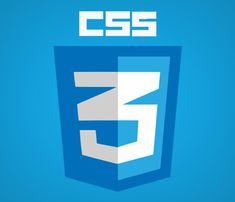Cascading Style Sheets (CSS) is the backbone of modern web design, bringing life and style to otherwise plain HTML. css Whether you’re a seasoned developer or just starting out, mastering CSS is crucial for creating engaging, responsive, and aesthetically pleasing websites. In this guide, we’ll explore essential CSS techniques every developer should know to elevate their web development skills.

1. CSS Grid and Flexbox: Building Responsive Layouts
Gone are the days of hacking layouts with floats. CSS Grid and Flexbox have revolutionized web design, offering developers intuitive and powerful tools for creating responsive and flexible layouts.
- Flexbox is ideal for creating one-dimensional layouts, such as navigation bars or aligning items within a container.cssCopy code
.container { display: flex; justify-content: space-between; align-items: center; } - CSS Grid shines when building two-dimensional layouts like web pages or complex grids.cssCopy code
.grid-container { display: grid; grid-template-columns: repeat(3, 1fr); gap: 20px; }
Combine these tools to create versatile and responsive designs.
2. Custom Properties (CSS Variables)
CSS variables allow you to define reusable values, making your stylesheets more maintainable and scalable.
cssCopy code:root {
--primary-color: #3498db;
--secondary-color: #2ecc71;
--font-size: 16px;
}
body {
color: var(--primary-color);
font-size: var(--font-size);
}
Changing your site’s theme becomes effortless with custom properties.
3. Pseudo-Classes and Pseudo-Elements
Enhance interactivity and style dynamic elements with pseudo-classes and pseudo-elements.
- Pseudo-classes:cssCopy code
a:hover { color: #e74c3c; }Add hover effects, focus states, and more. - Pseudo-elements:cssCopy code
p::first-line { font-weight: bold; }Style specific parts of elements without extra markup.
4. Media Queries: Responsive Design
Responsive design ensures your website looks great on any device. Use media queries to adapt layouts and styles.
cssCopy code@media (max-width: 768px) {
body {
font-size: 14px;
}
.grid-container {
grid-template-columns: 1fr;
}
}
Test your designs on different screen sizes to ensure a seamless user experience.
5. Animations and Transitions
Bring your website to life with smooth transitions and animations.
- Transitions:cssCopy code
button { transition: background-color 0.3s ease; } button:hover { background-color: #9b59b6; } - Keyframe Animations:cssCopy code
@keyframes slideIn { from { transform: translateX(-100%); } to { transform: translateX(0); } } .animated { animation: slideIn 0.5s ease-in-out; }
Animations improve user engagement when used sparingly.
6. Using Preprocessors like SASS
CSS preprocessors like SASS enhance your workflow with nested rules, mixins, and more.
Example of SASS:
scssCopy code$primary-color: #2980b9;
.button {
background-color: $primary-color;
&:hover {
background-color: darken($primary-color, 10%);
}
}
After compiling, this generates clean CSS and saves time on repetitive tasks.
7. Typography and Web Fonts
Typography can make or break your design. Use web fonts and control text styles effectively.
cssCopy code@import url('https://fonts.googleapis.com/css2?family=Roboto:wght@400;700&display=swap');
body {
font-family: 'Roboto', sans-serif;
line-height: 1.6;
}
Experiment with font sizes, line heights, and letter spacing for optimal readability.
8. CSS Best Practices
- Keep It DRY (Don’t Repeat Yourself): Use reusable classes and variables.
- Organize Your Styles: Group related styles together for better readability.
- Use a Naming Convention: Follow BEM (Block-Element-Modifier) or a similar convention for consistency.cssCopy code
.button--primary { background-color: #1abc9c; }
Conclusion
Mastering CSS is a continuous journey, as the language evolves with new features and techniques. By leveraging these essential techniques, you’ll not only streamline your workflow but also create visually stunning and user-friendly websites.
Which of these CSS techniques do you use most often? Share your thoughts and favorite tips in the comments below!